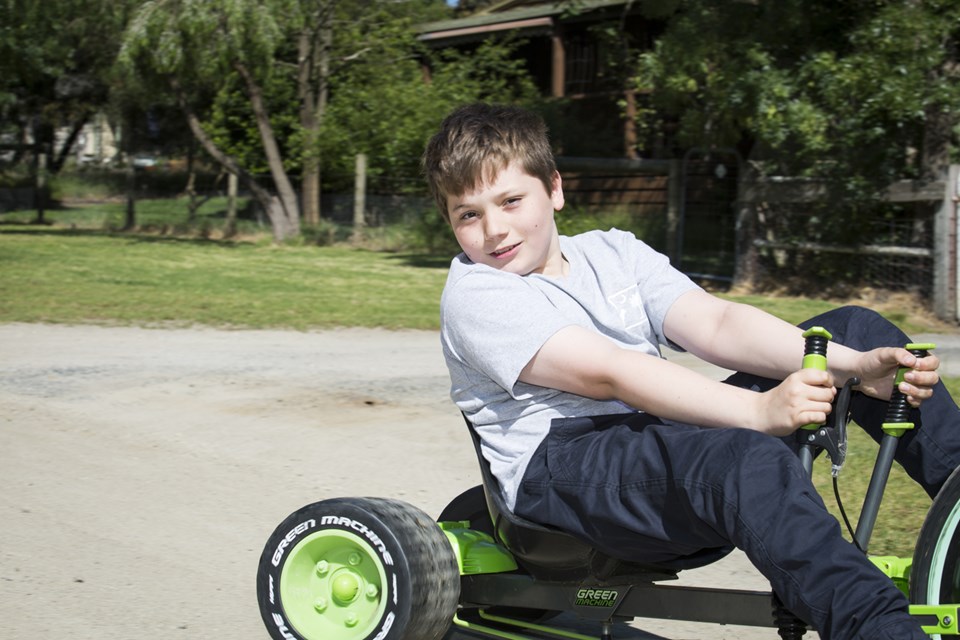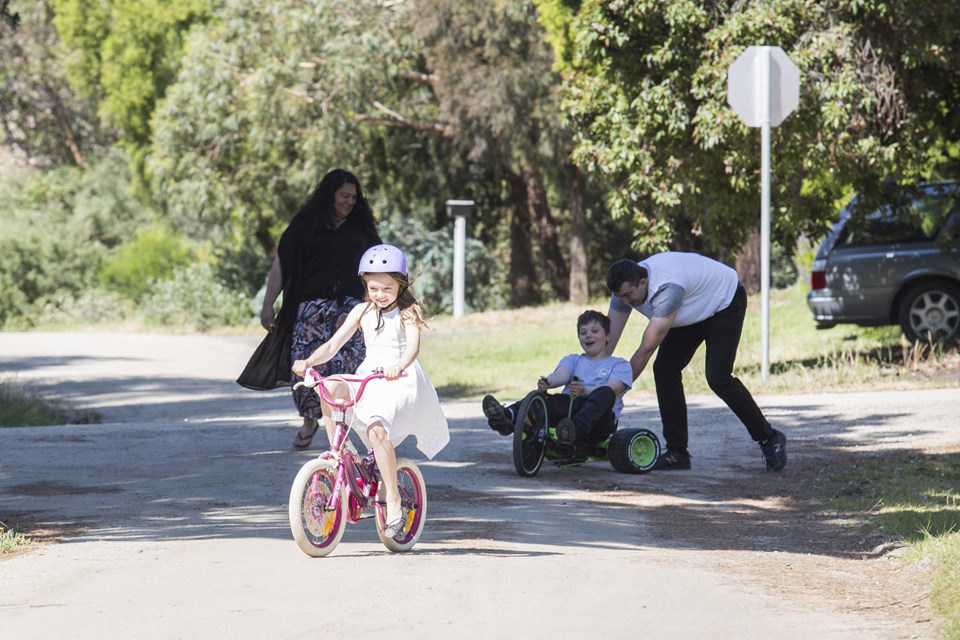Zander's return to school was all about connecting with his peers.
 |
 |
Shannon and Juanita’s son Zander was just having a normal Saturday morning playing in the lounge room when he came running out saying his head hurt.
“I thought maybe he’d copped a toy to the head or something. I came inside because the tone of his voice just sounded different,” says Juanita. “I noticed his face had drooped, and I sang out to Shannon to call the ambulance.”
Zander quickly lost the ability to speak, and the right side of his body went limp.
“I didn’t even know kids could have strokes, but I’d seen something online about the signs. I remember telling the triple zero operator I thought it was a stroke. When the ambo arrived, he picked it as a stroke too. He made sure they were ready for him when we got to hospital” says Shannon.
“We were lucky we were listened to and he got the care he needed.”
Within a week, Zander was discharged from intensive care and went into rehab for three months as an inpatient. He gradually started walking and eating again. The last thing to return was his speech.
“I thought when he got his speech back, he would get it all back and we’d be able to talk normally, but he has aphasia, so he has trouble finding words,” says Juanita.
The family found different ways to communicate, including using signs and pictures.
“He got so sick of the nurses poking and prodding him that we printed out a picture of a badger, and when he’d had enough of us fussing over him, he’d just point at the badger and we’d back off. Like, ‘Stop badgering me!’”
As he recovered, the family started to think more about his return to school. Because of the fatigue he suffered, this was always going to be challenging, even just for a social visit.
“The environment was loud, there were lots of things going on. It was a little bit confronting for him to go back,” says Juanita.
“We had lots of meetings with the hospital and his physio, OT, speech therapists, neuro psych, everyone. We sat down with his teachers and principal and said this is what he can and can’t do.”
They eased Zander into things, starting with just half an hour each day.
“Because of the aphasia, it’s very hard for him to get across what he wants to say sometimes, and he gets frustrated when it comes out the wrong way. He can come off as a bit confrontational around the other kids,” says Shannon.
“He’s not angry at them, he’s just trying to get his point across,” says Juanita.
To help smooth the transition, they prepared a PowerPoint presentation for teachers and classmates.
“We gave the presentation and talked about what he’s been through and how best to communicate with him, and to give him time to respond and things like that” says Juanita. “We tried to make it as simple as possible to get the point across, because it’s a hard thing for kids to understand. We also just let the kids ask us lots of questions.”
Managing Zander’s fatigue remains one of the biggest issues for the family.
“When we first left hospital, they told us he’d be back to full-time school by the end of the year, but the end of the year rolled around and he was struggling to do two hours,” says Juanita.
To make sure Zander has all the support he needs, the family have become strong advocates for him at school. They have regular meetings with Zander’s student support group at the school.
“We sit down with Zander’s key people once a term and look at where he is with his education and his peers. For us, the return to school was all about engaging with his peers. That was the real driver for us, to get him back into the community and connected again,” says Juanita.
“We’ve also recently started to get Zander involved in those meetings, because he needs to be his own advocate as he moves into high school.”
The family feels very fortunate that the school has been so accommodating and accepting of Zander’s needs. “Zander’s teacher’s aide is amazing. She’s really helped him through a lot of anxiety. We have some really great people around us,” says Juanita.
Asked for some tips on dealing with schooling, Juanita says a communication book helps. “It goes to and from school with Zander. We can let his teacher and his aide know how he’s doing each day. It gives them conversation starters that help put him at ease.”
“The teachers write things like when he had his medication, what kind of mood he’s in, what he’s loving at the moment, what he’s engaging with, and then what are the challenges. It saves them having to debrief with us every day,” says Juanita.
“Make sure you the read Department of Education policy and guidelines for students with disabilities. Ask the school to supply them if you need to. Access all the support that’s available.”
